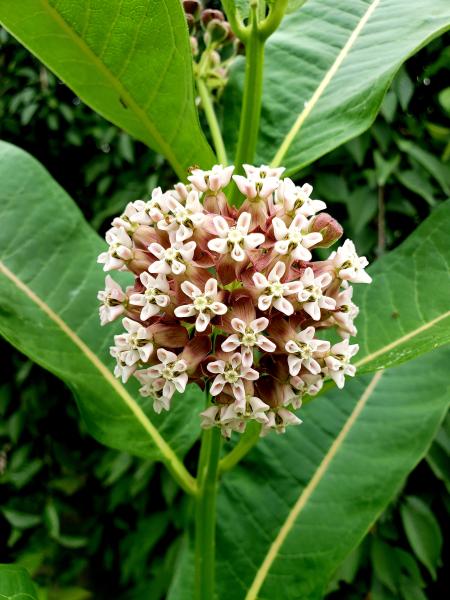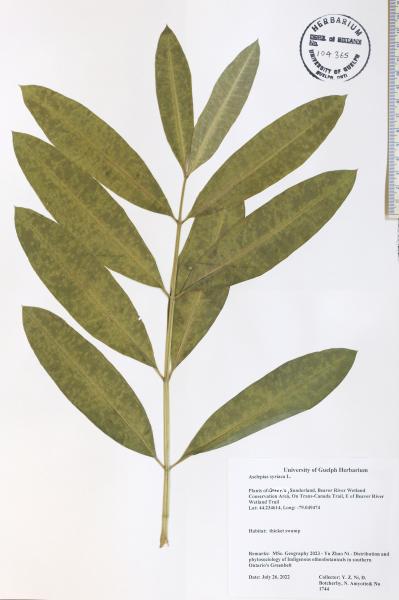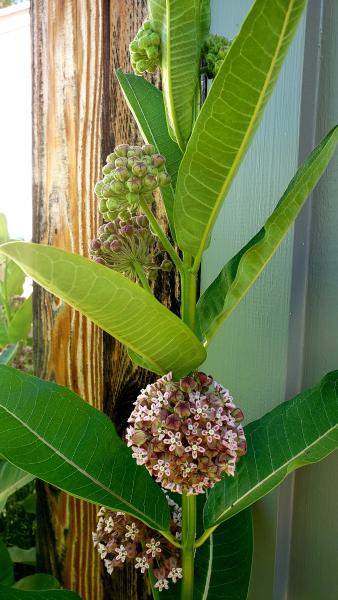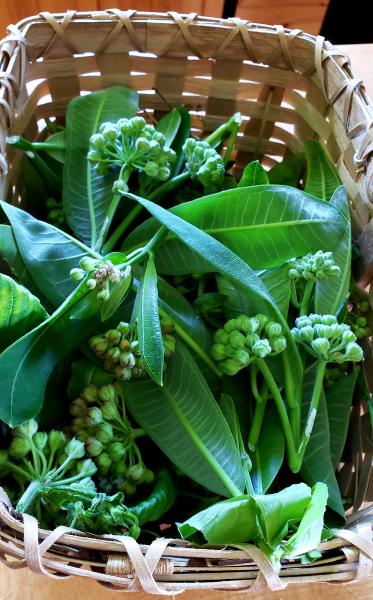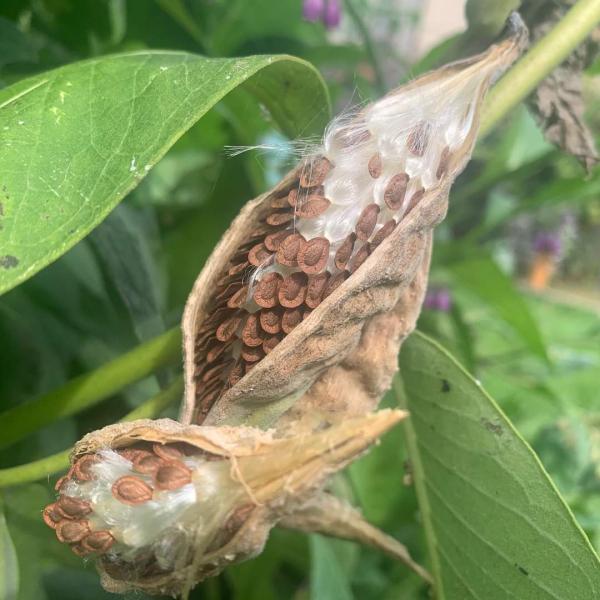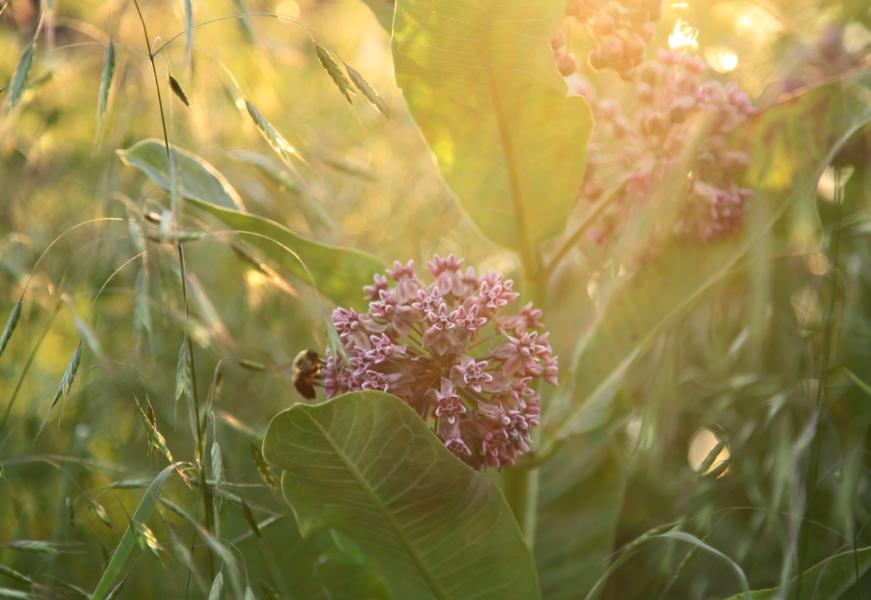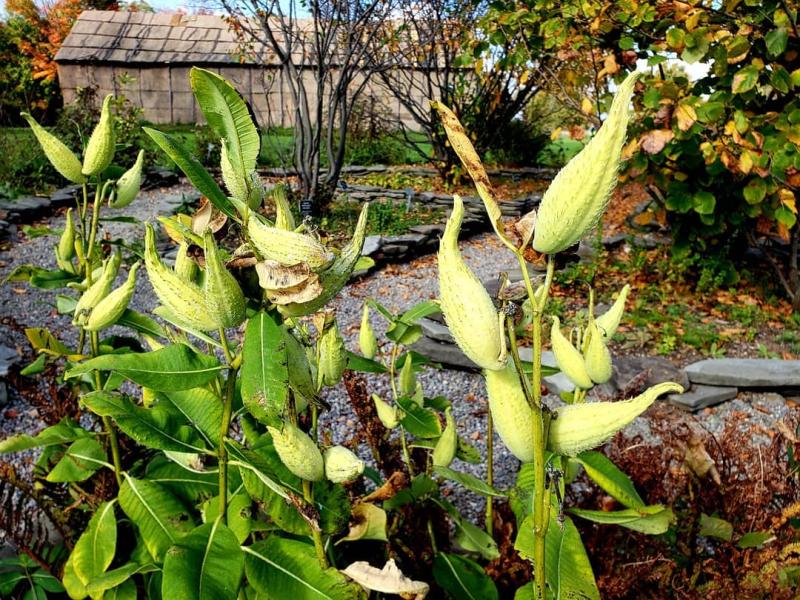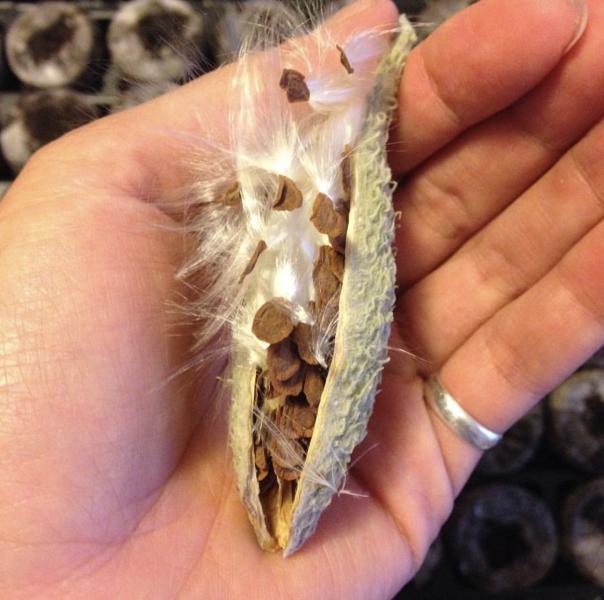
Names and Their Meanings
Common Milkweed - Asclepias syriaca
Common Milkweed
Description
Milkweed is a striking perennial erect herb that grows up to 2 meters tall. Its stems are thick and fuzzy. Leaves are opposite and are oval shade, with dense pubescence on the underside. Pink flowers grow in a fragrant spherical umbel, with 20-130 flowers per inflorescence. The bisexual florets are small, with five pink reflexed petals, and the filaments fused to form a fleshy star. The fruit is a spindle shaped follicle, opening along a seam to release brown seeds attached to silky hairs and a bone-like midrib. The plant bleeds white sap when injured. Milkweed likes warm, well drained sandy, clay rich, or calcareous soils, occurring along sunny streambanks and riparian zones, in meadows and fields, and at forest edges and roadsides.
Conservation Status
S5 (Secure) in Ontario
Uses
Milkweed is a spring vegetable, widely enjoyed as a spring forage and also used as a famine food for at least a century, if not longer. Frederick Wilkerson Waugh documented its use at Six Nations of the Grand River multiple times. First in January of 1912, John Arthur Gibson and other locals (a Mrs. Wright is mentioned) described boiling the young plants as greens, eaten along with fresh fish and other vegetables. Later in January 1912, he documented three ways of preparing milkweed:
1st. In early spring for young plants, use both stem & leaves, boils 15 or 20 minutes, drain, boil in another water, drain & season as before
2nd. When stem is a little hard, pick leaves only, cook same as before
3rd. Young flower clusters & not the leaves, cook same as before
Dr. Dolan first learned how to harvest milkweed buds and young leaves at Onondaga Nation, from Hickory Edwards. He showed her how to take only the tops, and not all of them. He also shared the protocol that you have to bring half of what you harvest to an elder. Milkweed buds and very young pods are also harvested and pickled. Alyssa General noted that the stems of Swamp Milkweed (Asclepias incarnata) were historically used as fibers for net-making. She noted that the spring greens and buds can be fried and eaten like chips. When the pods dry up, they hold spark very well for starting fire. Milkweeds were also a notable food among Ojibway ethnobotanist Scott Herron’s research groups, and appear on the Healthy Roots traditional foods guide that was developed by Chandra Maracle and Rick Hill, at Six Nations of the Grand River.
